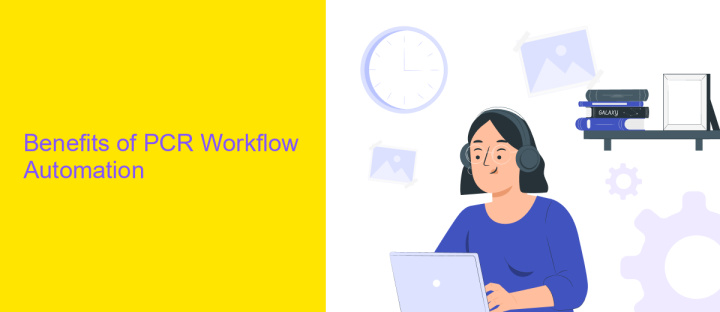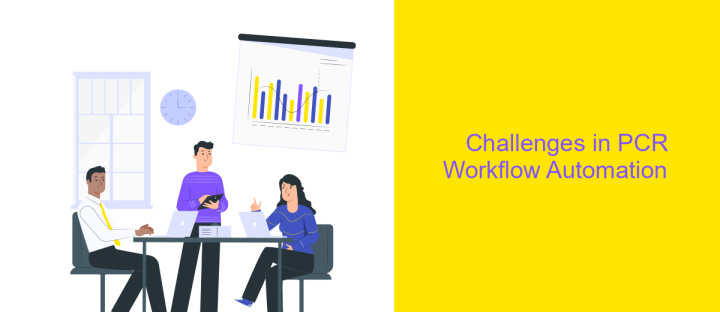PCR Workflow Automation
Polymerase Chain Reaction (PCR) is a cornerstone technique in molecular biology, enabling the amplification of specific DNA sequences. As the demand for high-throughput and precise genetic analysis grows, the automation of PCR workflows has become essential. This article explores the benefits, challenges, and advancements in PCR workflow automation, highlighting how it enhances efficiency, accuracy, and reproducibility in modern laboratories.
PCR Workflow Automation Overview
PCR Workflow Automation streamlines the process of polymerase chain reaction (PCR) testing, ensuring efficiency and accuracy in molecular diagnostics. By automating repetitive tasks, laboratories can reduce human error and improve throughput, allowing scientists to focus on data analysis and interpretation.
- Sample Preparation: Automated systems handle the preparation of samples, including extraction and purification.
- Reagent Dispensing: Precise dispensing of reagents is managed by robotic systems to ensure consistency.
- Thermal Cycling: Automation controls the thermal cycling process, maintaining optimal conditions for DNA amplification.
- Data Analysis: Advanced software analyzes the results, providing quick and accurate interpretations.
- Integration: Services like ApiX-Drive facilitate seamless integration of various laboratory instruments and software.
Implementing PCR workflow automation not only enhances the reliability of results but also significantly reduces the time required for testing. With the help of integration platforms like ApiX-Drive, laboratories can easily connect different systems, ensuring a smooth and efficient workflow. This technological advancement is crucial for meeting the increasing demands of modern diagnostics.
Benefits of PCR Workflow Automation

Automating the PCR workflow offers numerous advantages, significantly enhancing efficiency and reliability in the laboratory. One of the primary benefits is the reduction of human error, which is crucial in obtaining accurate and reproducible results. Automation ensures precise pipetting, consistent thermal cycling, and standardized protocols, thereby minimizing the variability that can arise from manual handling. This not only improves the quality of the data but also saves valuable time for researchers, allowing them to focus on data analysis and interpretation rather than repetitive tasks.
Another significant advantage is the integration capabilities that automation platforms offer. For instance, using services like ApiX-Drive, laboratories can seamlessly integrate their PCR systems with other lab management software, ensuring smooth data transfer and real-time monitoring. This integration facilitates better workflow management, reduces the risk of data loss, and enhances overall productivity. Additionally, automated systems can handle larger sample volumes with ease, making them ideal for high-throughput environments where speed and accuracy are paramount.
Steps in Automated PCR Workflow

Automating the PCR workflow significantly enhances the efficiency and accuracy of the process. This involves a series of meticulously coordinated steps to ensure optimal results and reproducibility. Below are the key steps involved in an automated PCR workflow:
- Sample Preparation: Samples are prepared and loaded into the automated system, ensuring precise handling and minimizing contamination risks.
- Reagent Setup: Reagents are automatically dispensed and mixed according to the protocol, maintaining consistency across all samples.
- Thermal Cycling: The automated system conducts the thermal cycling process, precisely controlling temperature changes to amplify the target DNA sequences.
- Data Collection: The system collects and analyzes data in real-time, providing immediate feedback and ensuring high-quality results.
- Integration and Analysis: Integration with services like ApiX-Drive can streamline data transfer and analysis, enhancing the overall workflow efficiency.
By automating these steps, laboratories can achieve higher throughput, reduced human error, and more reliable results. The integration of advanced services and technologies plays a crucial role in optimizing the PCR workflow, making it more efficient and scalable.
Challenges in PCR Workflow Automation

Automating the PCR workflow presents several challenges that laboratories must address to ensure efficiency and accuracy. One of the primary issues is the integration of various devices and software systems, which often come from different manufacturers and lack standardized communication protocols.
Another significant challenge is the need for precise calibration and maintenance of automated systems. Even minor deviations can lead to substantial errors in PCR results, necessitating rigorous quality control measures. Additionally, the complexity of setting up and managing these automated systems can be daunting, requiring specialized training for laboratory personnel.
- Device and software integration issues
- Calibration and maintenance requirements
- Complexity in setup and management
- Need for specialized training
To address the integration challenges, services like ApiX-Drive can be instrumental. ApiX-Drive facilitates seamless integration between different software and devices, streamlining the automation process. By using such services, laboratories can significantly reduce the time and effort required to synchronize their PCR workflow, thereby enhancing overall efficiency and reliability.
Future of PCR Workflow Automation
The future of PCR workflow automation is poised to revolutionize the field of molecular diagnostics. With advancements in artificial intelligence and machine learning, automated systems will become more efficient, reducing human error and increasing throughput. These technologies will enable real-time data analysis and adaptive workflows, allowing laboratories to quickly respond to changing conditions and optimize their processes. Additionally, the integration of IoT devices will facilitate seamless communication between different stages of the PCR process, enhancing overall efficiency and reliability.
Integration with cloud-based platforms and services like ApiX-Drive will further streamline PCR workflows by enabling easy data transfer and integration with various laboratory information management systems (LIMS). ApiX-Drive, for instance, allows laboratories to automate data exchange between different software applications without the need for complex coding, making it easier to manage and analyze large datasets. As these technologies continue to evolve, we can expect PCR workflow automation to become more accessible and scalable, ultimately leading to faster and more accurate diagnostic results.
FAQ
What is PCR Workflow Automation?
How can PCR Workflow Automation improve laboratory efficiency?
What are the key components of a PCR Workflow Automation system?
Can PCR Workflow Automation be integrated with existing laboratory information management systems (LIMS)?
What should be considered when choosing a PCR Workflow Automation solution?
Routine tasks take a lot of time from employees? Do they burn out, do not have enough working day for the main duties and important things? Do you understand that the only way out of this situation in modern realities is automation? Try Apix-Drive for free and make sure that the online connector in 5 minutes of setting up integration will remove a significant part of the routine from your life and free up time for you and your employees.

